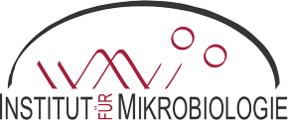
The main focus of our working group is understanding the adaptation and virulence strategies employed by the opportunistic pathogen Pseudomonas aeruginosa. For this purpose, we apply cutting-edge technologies for the study of fundamental processes that help this bacterium to colonize and thrive in human tissues, such as biofilm formation, vesiculation, motility and antibiotic resistance. These techniques methodologies include genetic engineering using novel CRISPR/Cas9-derived based tools, fluorescence and electron microscopy, interactomics (elucidation of protein-protein interactions), or next-generation sequencing. As part of this adaptation process, we study both the prototypical laboratory strains (PA14 and PAO1) as well as clinical strains isolated from the lungs of patients suffering from the genetic disorder Cystic Fibrosis (CF) or the lung condition called Bronchiectasis. For this last project, we have stablished a fruitful cooperation with the Helmholtz Institute for Pharmaceutical Research Saarland (HIPS) and the Hannover Medical School (MHH). In this regard, we are particularly interested in the differences between P. aeruginosa’s modes of adaptation to both pulmonary diseases.
As a secondary research topic, we study the antibiotic resistance mechanisms of the Gram-positive bacterium Clostridioides difficile. This strictly anaerobic intestinal pathogen is at the forefront of nosocomial and community-acquired infections worldwide, causing from mild diarrhea to pseudomembranous colitis and sepsis. Attributes of severe infection span from colon acute inflammation to life-threatening loss of fluids, which in turn pose an economical burden due to hospital expenses. The emergence of hypervirulent and antibiotic -resistant pathogenic strains accounts to a large extent for the globally ever-increasing rates of morbidity and mortality.is one of the major causes of morbidity and mortality in Germany, inflicting severe cases of nosocomial diarrhea. In collaboration with the group of Dr. Borrero de Acuña, we apply extensively screen a an extensivecollection collection of C. difficile’s transposon mutants to discover unveil undisclosed the molecular basis of C. difficile adaptation topathways used by this bacterium to the ever-changing conditions of the human gut (osmolarity, pH, temperature) or to classical antibiotics treatment employed in the clinic become resistant to commonly used antibiotics such as (such as -Vancomycin, Metronidazole, Vancomycin or Fidaxomycin-.) or XXXXXXX.